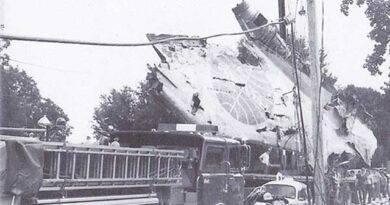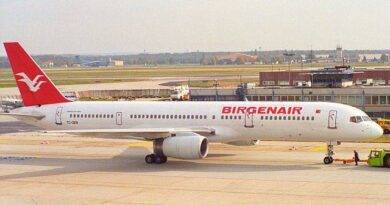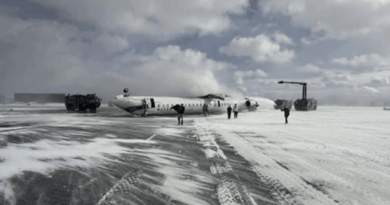Dana Air Flight 0992
On June 3, 2012, around 15:45, 5N-RAM, a Boeing MD-83, a domestically scheduled commercial flight operated by Dana Airlines Limited tagged as flight 0992 (DAN 992), crashed during a forced landing after experiencing a complete loss of power in both engines while on approach to Lagos, Nigeria’s Muhammed Murtala Airport (LOS). The plane was on an instrument flight plan at the time and visual meteorological conditions were in effect. Six crew members and all 153 passengers on board the aircraft were killed.
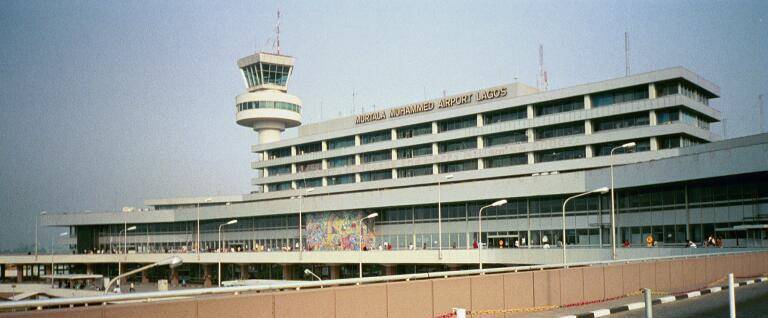
source: premium times Nigeria
The general manager of public affairs for the NNPC, Dr. Levi Ajuonuma, two World Bank employees, Mr. Ehime Aikhomu, the first son of the late Admiral Augustus Aikhomu, a former military vice president, Mr. John Ahmadu, a retired deputy inspector-general of police (DIG), Lt.-Col. Jumbo Ochigbo, and Major-General Umar Tahir were among those killed in the crash.
Since an Alia Royal Jordanian Airlines Boeing 707 crashed in Kano in 1973, killing 176 passengers and crew, Dana Air Flight 0992 was Nigeria’s worst aviation disaster.
How And Why Did This ill-Fated Incident Happen?
For the slightly longer than one-hour flight to Lagos, Dana Air Flight 0992 departed Nnamdi Azikiwe International Airport (ABV) in Abuja at 14:58 local time. Piloting the aircraft were 55-year-old American Captain Peter Waxtan and 34-year-old Indian First Officer Mahendra Singh Rathore in favorable weather conditions.
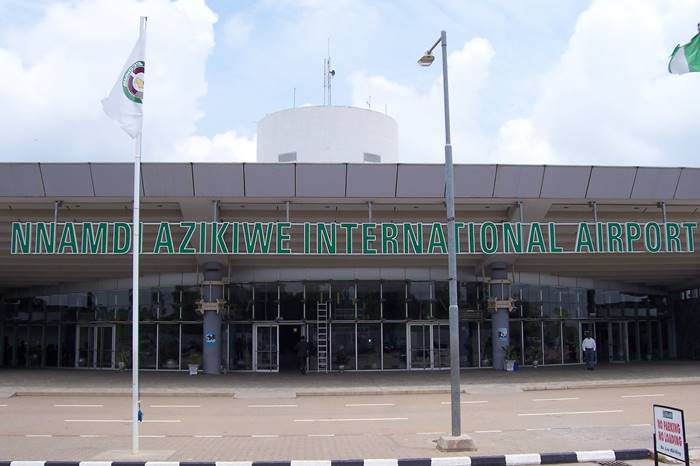
source: wikipedia
The crew discovered a problem with the left side engine 17 minutes into the flight, with Rathore at the controls. The engine settings were correct, but not enough thrust was being produced. Rathore questioned Captain Waxtan about whether he ought to request that the flight engineer investigate the engine issue. Waxtan answered no, saying that the two of them could solve the issue independently. The panel near the plane’s back door was the next thing Waxtan questioned Rathore about. Because he had denied the ground crew’s request to let the passengers exit through the back door before the plane arrived in Abuja from Lagos, the captain had reason to be suspicious.
They chose to proceed rather than make a detour to the closest airport despite their suspicions that a member of the ground personnel may have tampered with the aircraft. They did not mention the engine issue when they phoned Lagos Air Traffic Control (ATC) to ask for permission to descend. Additionally, they disregarded the protocol to check the emergency checklist for a non-operational engine.
Waxtan instructed Rathore to increase the plane’s descent after they were given the all-clear to drop. Since it would be best to implement it gradually, the First Officer declined. The crew once more failed to notify the malfunctioning engine after Lagos ATC gave them permission to land on Runway 18L. Waxtan took over the flight’s controls from Rathore as it approached and, with the right engine still operating well, thought they could land the plane without incident. The crew ran through many checks as the jet approached Lagos but neglected to read the instructions for landing the plane with just one engine.
At 15:30 and 15:40, DAN 992 reported going through 18,100 and 7,700 feet, respectively. DAN 992 was given the final heading to intercept the final approach path for runway 18R after receiving a series of heading and altitude instructions from the controller.
The flight crew worked on pre-landing procedures between 15:37 and 15:41, including extending the flaps and landing gear and deploying the slats. The first officer (FO) asked, “both engines coming up?” at 15:41. “Negative,” the captain (Capt) retorted. After some discussion, the flight crew decided to declare an emergency.
The airplane continued to lose speed and altitude while flying without power, and when the low altitude alert sounded, it crashed into the heavily populated Iju-Ishaga suburb close to the airport.
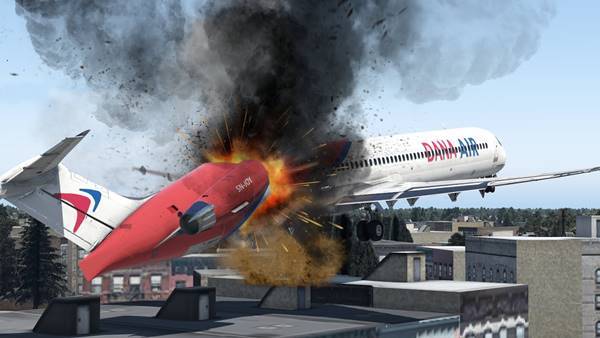
Aftermath: The Reason Behind The Crash and Confessions
Everyone in the front portion of the jet was instantly killed when on impact, while those in the back originally survived. They had no chance to flee, however, since everyone who survived the crash died from smoke inhalation before a door could be attempted to be opened. Many locals of Iju-Ishaga had also been slain and injured; some had been fortunate enough to survive, while others had not been so fortunate. The collision claimed the lives of at least six individuals on the ground, however some accounts placed the death toll as high as 10.
Crowds of bystanders flocked to the scene almost away after the tragedy to attempt to get a sight of the devastation, making it challenging for firemen to get to the fire. Emergency personnel toiled for hours to put out the fire, which was hastened by the enormous amount of paper within the printing press and towering flames that loomed over the area. By the time they arrived, nothing was left of the MD-83 or the printing press except from its distinctive T-shaped tail, which was left leaning awkwardly on top of a heap of burnt debris. The Nigerian government dispatched the military to protect the accident scene as crowds grew there. This led to violent fights as troops assaulted individuals and used tear gas to scatter the spectators.
Nigeria’s Accident Investigation Bureau (AIB) began an investigation into the cause of the collision shortly after it occurred. However, they immediately encountered a problem: the flight data recorder had been damaged as a result of the lengthy exposure to fire, making it impossible to examine the operation of the engines in detail during the voyage. However, the intact cockpit voice recorder was found and provided a wealth of helpful information.
Within 17 minutes of takeoff, the left engine had in fact ceased responding to throttle directions, shocking investigators who had assumed that the pilots had followed all proper protocols. They never used checklists and kept declaring them finished without reading off a single item. They flew over a number of good airports where they might have made a last-minute landing. The pilot put his trust in their ability to arrive in Lagos unhurt rather than making a mayday call because of his fear of being probed by the Nigerian Civil Aviation Authority. The cockpit chat was full of profanity.
The pilots had taken no action to ensure that their position was stabilized, so they were completely unprepared when their second engine also failed. They then sealed their doom by disregarding the twin engine failure emergency checklist. Simulator testing revealed that the pilots could have reached the runway with ease had they adhered to the checklist’s instructions for maximizing their glide.
It was incredibly challenging to determine the cause of the engines’ failure. The engines were not producing power at the time of collision, according to on-site inspection, but after that, the line of evidence was effectively cut off. The severely damaged engines were sent back to the Miami factory of Millennium Engine Associates for a first dismantling. There, investigators looked at the parts of the fuel distribution system and performed metallurgical testing on the numerous fracture spots. Despite damage to the secondary fuel manifold intake tubes on both engines, there was no solid proof that it happened before the crash, therefore the AIB had the fuel manifold pieces sent back to Nigeria for a more thorough investigation.
Throughout the following 3 years, AIB and Nigerian authorities kept investigating the engines for further information. In 2013, AIB caught a lead about the incident with the help of another similar incident which involved another MD-83 and a pair of JT8D engines that belonged to Dana Air. Fortunately, this time, the pilots followed the emergency instructions and successfully landed the plane without any damage.
AIB captured the mentioned airplane and disassembled for further investigation and information. They observed that the secondary manifold inlet tube had sheared off at its connecting point due to improper installation of the protective shielding surrounding it, which affected its aerodynamic form. The intake tube was repeatedly dragged sideways until it broke as a result of the poor fairing attachment acting like a sail in the hot air rushing through the engine and catching the edge of the improperly mounted fairing. Because the manifold did not follow the Pratt & Whitney service bulletin that required the original manifold assembly to be replaced with a stronger one, this failure was made feasible. Additionally, Millennium Engine Associates, which had by this point changed its name to Global Engine Maintenance, LLC, had just rebuilt this engine, just like the failed engines on Flight 992 had.
This occurrence let investigators recognize that even though the secondary manifold inlet tube from flight 992’s left engine showed no signs of fatigue cracking, it wasn’t impossible that the tube had failed in shear before the disaster. Both a shear failure brought on by faulty installation and a shear failure brought on by collision would have left almost similar traces behind. Even though it was difficult to demonstrate that the identical process was to blame for the left engine failure on Flight 992, it turned out to be the most plausible scenario.
The intake tube failure on the right engine was even more mysterious because it had been brought into conformity with the service advisory, thus it shouldn’t have happened that way. The AIB, however, was unable to determine why the right engine had stopped responding to throttle commands because Millennium Engine Associates had not returned the right engine’s secondary fuel manifold. The AIB could only surmise that the failure mechanism was probably similar to that of the left engine. However, because of the uncertainty, some people have continued to believe that the right engine issue was really brought on by the pilots’ improper usage of the fuel pumps, contrary to what several experts first believed.
Later on, many more discoveries were made by the officials about the crash, but the main reason had already been discovered, and since they aren’t as important as this, we don’t feel the negligence to mention them here. However, other strides happened about the incident later on, when an anonymous Dana Air employee confessed about Flight 0992.
“An unnamed Dana Airlines official has told Channels Television that the ill-fated Dana Air flight 0992, McDonnell Douglas (MD 83), had a mechanical problem immediately after taking off from Lagos and making a stop in Calabar.” reported Channels Television, a Nigerian news TV channel.
She said that the airline’s Indian owners ignored safety precautions and urged that the jet take off in an effort to maximize profit, sending the plane to Abuja to pick up passengers when it should have been sent back to Lagos for more maintenance.
She also stated that the flight was not supposed to have taken off since it had a history of hydraulic problems.
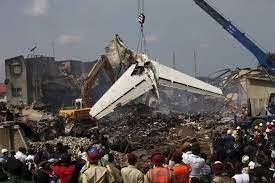
Sources:
https://en.wikipedia.org/wiki/Dana_Air_Flight_0992
https://simpleflying.com/dana-air-flight-992/
https://admiralcloudberg.medium.com/tempting-fate-the-crash-of-dana-air-flight-992-811cb2130bab
https://www.channelstv.com/2012/06/04/we-were-forced-to-fly-the-faulty-plane-dana-officials/
https://www.channelstv.com/2012/06/03/plane-crashes-in-iju-agege-area-of-lagos/
